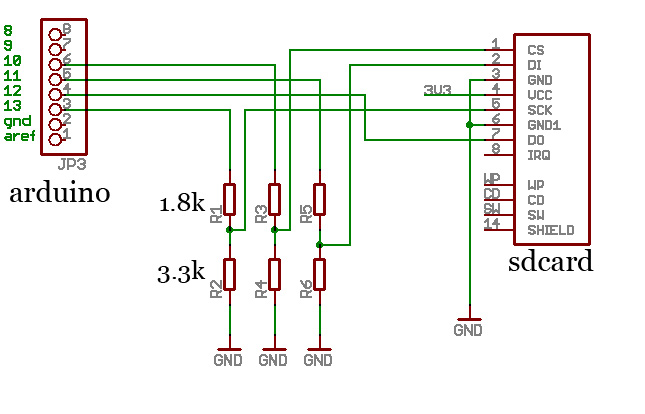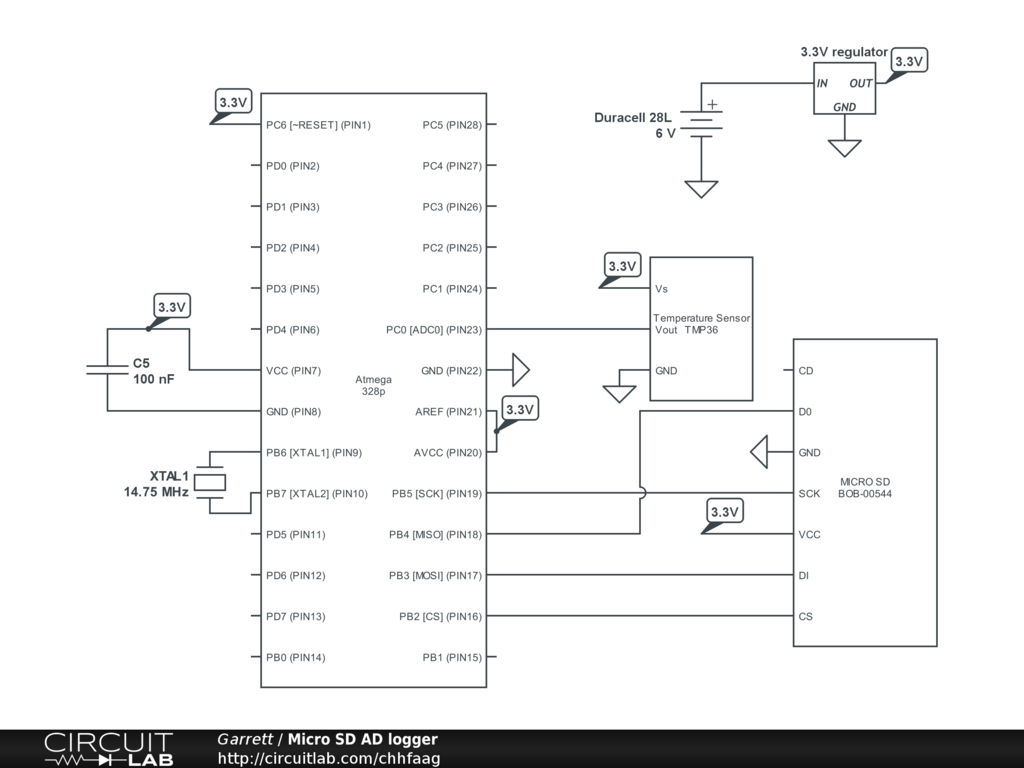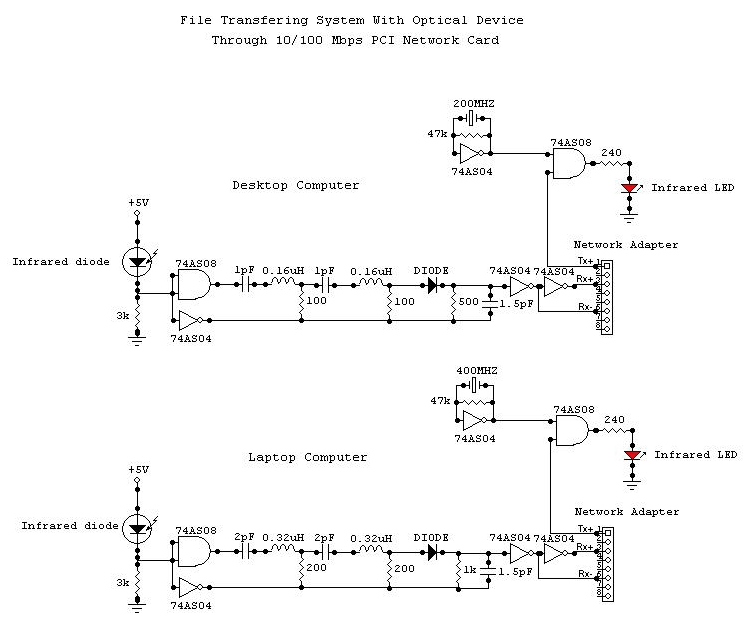
Fun card

The device is a smart card commonly utilized for unauthorized access to encrypted video signals. It features an Atmel AT90S8515A processor and an 8k EEPROM memory component, the AT24C64, providing sufficient processing capabilities for various applications. Different models of this card are available, each with distinct processors and EEPROM capacities. Future plans may include repurposing the card for more beneficial applications. It is possible that the card could support a minimal TCP/IP stack, enabling the creation of a small web server. The embedded circuitry diagram illustrates the internal components of the smart card. Three I/O lines are accessible externally for various functions. To establish a web server on this card, at least two lines are required for serial communication with a router that supports the SLIP protocol, leaving one I/O line available for additional functionalities. This remaining I/O line can be utilized to interface with a digital thermometer from Dallas Semiconductors, connect to a hit counter, or control an activity LED.
The smart card architecture is based on the Atmel AT90S8515A microcontroller, which is an 8-bit AVR RISC-based processor. This microcontroller is capable of executing instructions efficiently, making it suitable for embedded applications such as the smart card in question. The AT24C64 EEPROM provides 8 kilobits of non-volatile memory, allowing for data retention even when power is removed. This is crucial for storing configuration settings or user data that the card may need to access during operation.
The card's design incorporates three external I/O lines, which can be configured for various purposes based on the application requirements. For establishing a web server, two of these lines are designated for serial communication. This communication can be implemented using the SLIP (Serial Line Internet Protocol), which is a straightforward protocol for transmitting IP packets over a serial connection. The third I/O line remains available for additional interfacing options, enhancing the card's versatility.
Potential applications for this I/O line include connecting to a digital thermometer, which would allow for temperature monitoring and data logging. Alternatively, it could be used as a hit counter, tracking the number of accesses or interactions with the web server. Another practical use for this line is to drive an activity LED, providing visual feedback to indicate the operational status of the card or alerting users to specific events.
In summary, the smart card's architecture, featuring an Atmel AT90S8515A processor and an AT24C64 EEPROM, offers a robust platform for various applications. The flexibility provided by the three external I/O lines allows for creative implementations, including the potential for a web server, making this device a valuable tool for both unauthorized and authorized applications.One of those smart cards that are often used for illegal viewing of encrypted video signals. It contains an Atmel AT90S8515A processor and an 8k EEPROM memory AT24C64, which gives the card adequate processing power for numerous other purposes. Other card types exist, with different processors and EEPROM sizes. I intend to put my card to a better use one day (hopefully). It may well run a tiny TCP/IP stack which in turn will make it possible to create a small web server with it. The diagram above is the circuitry that`s embedded in the smart card. A total of 3 I/O lines are accessible from the outside and can be used for all sorts of activities. To make a web server on this card we need at least 2 lines for serial communication to a router that accepts the SLIP protocol.
This leaves us with one I/O line to play with. This I/O line can be used to interface with a digital thermometer from Dallas Semiconductors, or to connect to a hit counter, or simply an activity LED. 🔗 External reference
The smart card architecture is based on the Atmel AT90S8515A microcontroller, which is an 8-bit AVR RISC-based processor. This microcontroller is capable of executing instructions efficiently, making it suitable for embedded applications such as the smart card in question. The AT24C64 EEPROM provides 8 kilobits of non-volatile memory, allowing for data retention even when power is removed. This is crucial for storing configuration settings or user data that the card may need to access during operation.
The card's design incorporates three external I/O lines, which can be configured for various purposes based on the application requirements. For establishing a web server, two of these lines are designated for serial communication. This communication can be implemented using the SLIP (Serial Line Internet Protocol), which is a straightforward protocol for transmitting IP packets over a serial connection. The third I/O line remains available for additional interfacing options, enhancing the card's versatility.
Potential applications for this I/O line include connecting to a digital thermometer, which would allow for temperature monitoring and data logging. Alternatively, it could be used as a hit counter, tracking the number of accesses or interactions with the web server. Another practical use for this line is to drive an activity LED, providing visual feedback to indicate the operational status of the card or alerting users to specific events.
In summary, the smart card's architecture, featuring an Atmel AT90S8515A processor and an AT24C64 EEPROM, offers a robust platform for various applications. The flexibility provided by the three external I/O lines allows for creative implementations, including the potential for a web server, making this device a valuable tool for both unauthorized and authorized applications.One of those smart cards that are often used for illegal viewing of encrypted video signals. It contains an Atmel AT90S8515A processor and an 8k EEPROM memory AT24C64, which gives the card adequate processing power for numerous other purposes. Other card types exist, with different processors and EEPROM sizes. I intend to put my card to a better use one day (hopefully). It may well run a tiny TCP/IP stack which in turn will make it possible to create a small web server with it. The diagram above is the circuitry that`s embedded in the smart card. A total of 3 I/O lines are accessible from the outside and can be used for all sorts of activities. To make a web server on this card we need at least 2 lines for serial communication to a router that accepts the SLIP protocol.
This leaves us with one I/O line to play with. This I/O line can be used to interface with a digital thermometer from Dallas Semiconductors, or to connect to a hit counter, or simply an activity LED. 🔗 External reference





